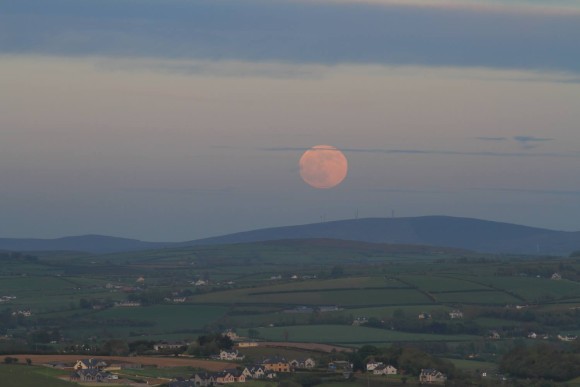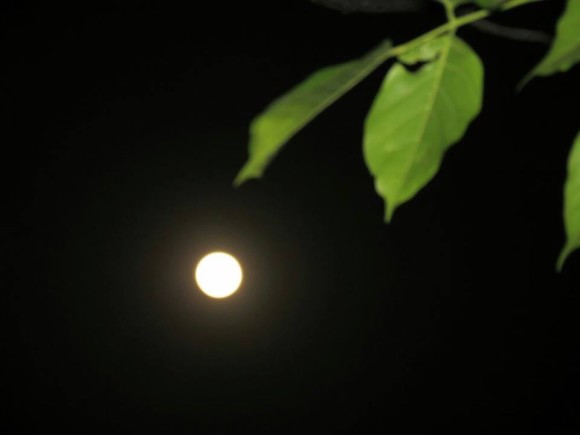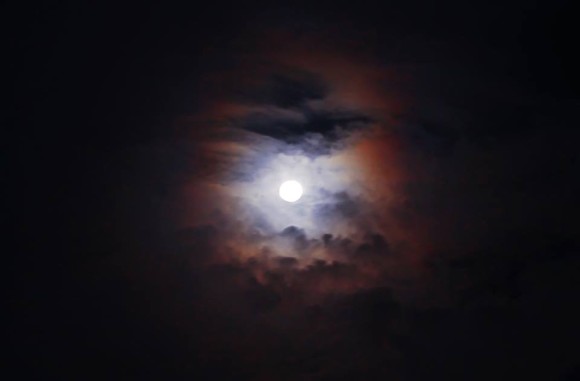Those that love stars need to be ready on the evening of June 22, 2013, as it will be time to check out the closest "Supermoon" of the year. There are going to be two chances to catch the "Supermoon" or "perigee moon" this weekend though, and Huffington Post reveals that it will peak on Sunday, June 23, 2013.
A supermoon is the coincidence of a full moon or a new moon with the closest approach the Moon makes to the Earth on its elliptical orbit, resulting in the largest apparent size of the moon's disk as seen from Earth. The technical name is the perigee-syzygy of the Earth-Moon-Sun system. The term "supermoon" is not astronomical, but originated in modern astrology. The association of the Moon with both oceanic and crustal tides has led to claims that the supermoon phenomenon may be associated with increased risk of events such as earthquakes and volcanic eruptions. However, the evidence of such a link is widely held to be unconvincing.
The next occurrence will be on June 23, 2013. This full moon will be the closest and largest full moon of the year. It also presents the moon’s closest encounter with Earth for all of 2013. The moon will not be so close again until August 10, 2014. They occur about once every 14 full moons in a full moon cycle.
The Moon's distance varies each month between approximately 357,000 kilometers (222,000 mi) and 406,000 km (252,000 mi) due to its elliptical orbit around the Earth (distances given are center-to-center).
The name SuperMoon was coined by astrologer Richard Nolle in 1979, arbitrarily defined as:
The term supermoon is not used within the astronomical community, which use the term perigee-syzygy or perigee moon. Perigee is the point at which the Moon is closest in its orbit to the Earth, and syzyg is a full or new moon, when the Earth, the Moon and the Sun are aligned. Hence, a supermoon can be regarded as a combination of the two, although they do not perfectly coincide each time. On average, about once a year the moon becomes full within a few hours of perigee....a new or full moon which occurs with the Moon at or near (within 90% of) its closest approach to Earth in a given orbit (perigee). In short, Earth, Moon and Sun are all in a line, with Moon in its nearest approach to Earth.

View larger.
| Astronomers say you can’t really tell the difference in size between a
supermoon and any other full moon. Check out this size comparison from
our friend Alec Jones in the UK.

Photo
by Tim Martindale, who wrote, “Tonight’s ‘supermoon’ rising over Bude
and Stratton [a parish in England]. Take a look outside now – it’s a
beauty!” May 24, 2013.

Abdulmajeed
Alshatti wrote, “Enjoying the supermoon and the low tide. May 24,2013.
Kuwait.” Because the moon is now full, and nearly at its closest to
Earth, extra high and extra low tides can be expected.

Photo
credit: Priya Kuman. She wrote, “24th May ’13 . Super Moon ……Flowers
for the beautiful white bride of the sky — in Muscat, Masqat.”

View larger.
| Jv Noriega in Manila, Philippines also caught the supermoon as it was
setting on the morning of May 25, 2013. The constellation Scorpius was
near the moon. Scorpius’ bright star Antares could be seen in the
moon’s glare.

Photo
credit: Raven Yu. She wrote,”Rising Full Flower Moon and an airplane
(luck shot). 24 May 2013 17:53, Marikina City, Philippines. I was taking
a photo of tonight’s moon when a plane flew through. I didn’t even
notice it with my naked eyes.”


































